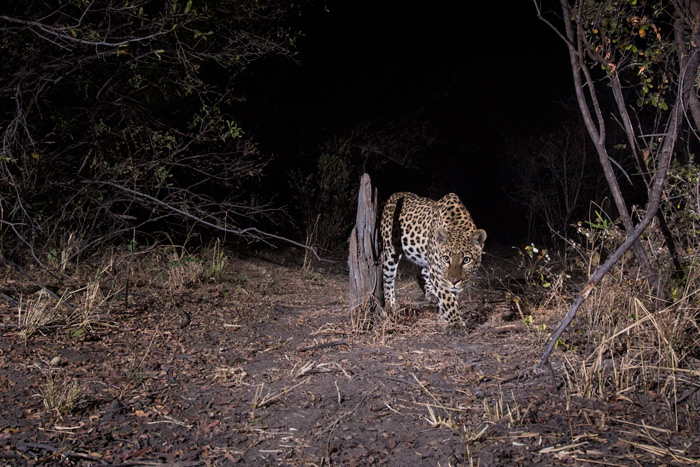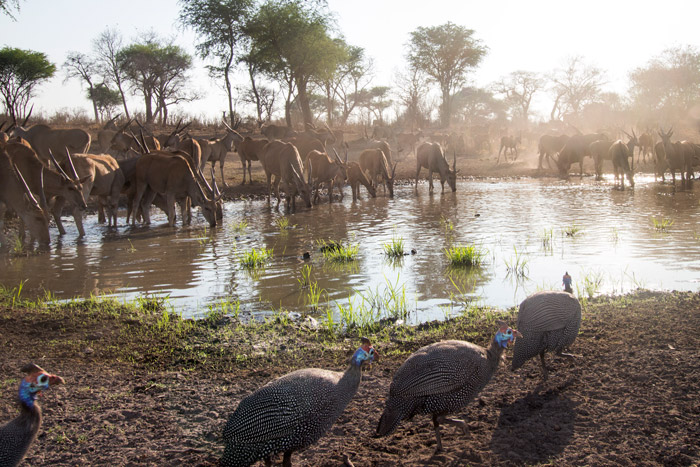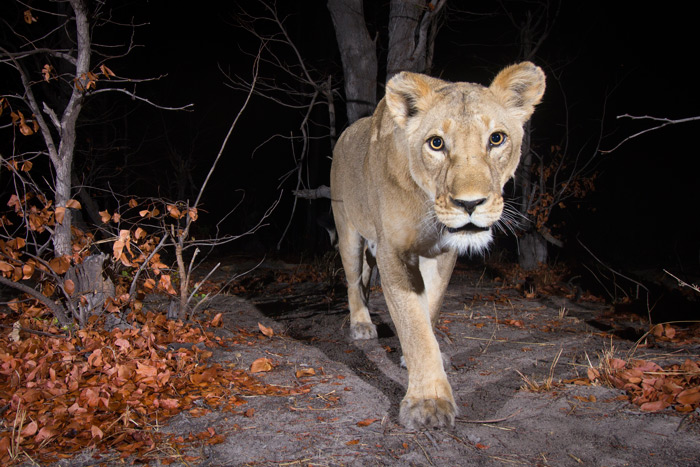In August last year, I undertook an assignment for WWF in the Zambezi Region of Namibia. We aimed to obtain high-quality camera trap images of elusive animals, some of which had only ever been photographed on research cameras before.
The Zambezi region is a narrow strip of land, formerly known as the Caprivi Strip, which runs between Botswana and Angola, all the way to the Zambezi River in the East. It is the heart of the Kavango–Zambezi Transfrontier Conservation Area, known as KAZA, which links wildlife populations in Angola, Zambia, Zimbabwe, Botswana and Namibia. WWF works with the governments, local communities and species conservation programmes throughout the KAZA region.

For many years, Lise Hanssen has been studying wildlife populations in the region, with a particular focus on the carnivores. Her research utilised over 100 research camera traps to build up a picture of predator populations for the first time. She could identify the ranges of leopards, lions, hyenas and African wild dogs. Her findings prove this area is importance to carnivore populations and movements throughout the KAZA region.

I teamed up with WWF and Lise to try to capture high-quality photographs of her study subjects. However, it quickly became apparent that this would not be easy, as the carnivores are extremely elusive and hard to see. I spent two weeks in Namibia trying to find and photograph them, but they didn’t glimpse a single one!
Fortunately, we had foreseen this challenge, and I had come prepared with five camera trap systems. These are similar to Lise’s research cameras but incorporate a high-quality DSLR camera instead.
I relied on Lise’s research and expertise to identify several promising sites for my traps. These included locations both inside and outside the national parks. At the end of my trip, I left my cameras in place so they could continue working for another 10 weeks.
Lise’s predictions were spot on, and over the following weeks, my camera traps started capturing images of the key species we were after, including leopards, hyenas, African wild dogs and even a serval cat.




Of course, my traps also photographed many other creatures. One trap in particular, positioned near a waterhole in the Mashi Conservancy, captured an incredible number of animals, including elephants, giraffes, eland, wildebeest and bushpigs. It also took thousands of photos of guineafowls. In fact, I estimate that I had 10 images of guineafowls for every other animal photographed. Sorting through them all took quite a while!



The greatest challenge of all was photographing the lions. These cats are extremely shy and spend much of their time outside the national parks. Even Lise has never seen them other than on her research cameras. I set up two camera traps near waterholes that the lions sometimes visit. In the three months that my traps were operating, the lions passed by twice, resulting in some rare shots of these secretive big cats.

I hope that my images, in combination with WWF’s efforts and Lise’s valuable research, can help inspire conservation action in this important part of the KAZA region.
You can follow Lise Hanssen’s research on the Kwando Carnivore Project Facebook page.
To comment on this story: Login (or sign up) to our app here - it's a troll-free safe place 🙂.![]()






